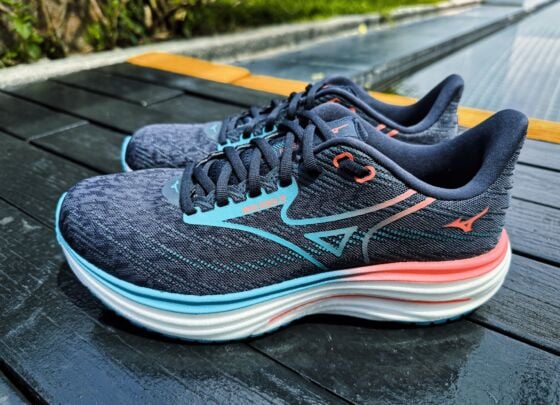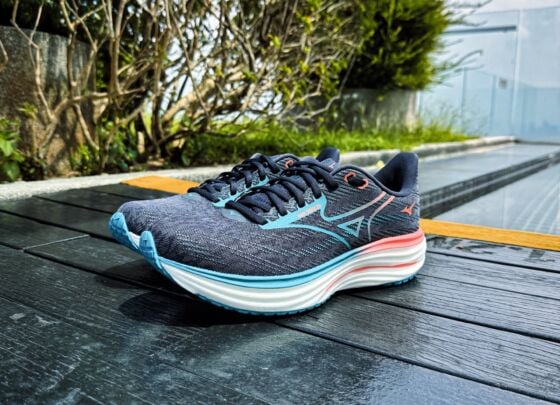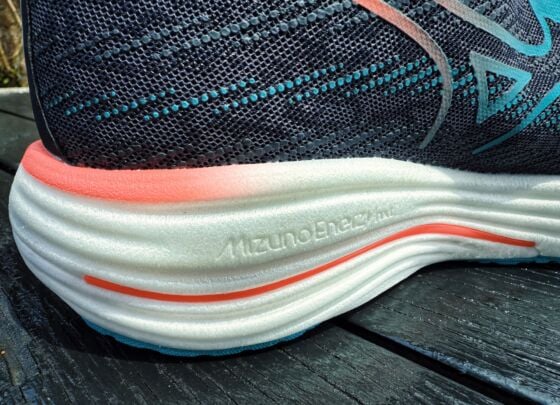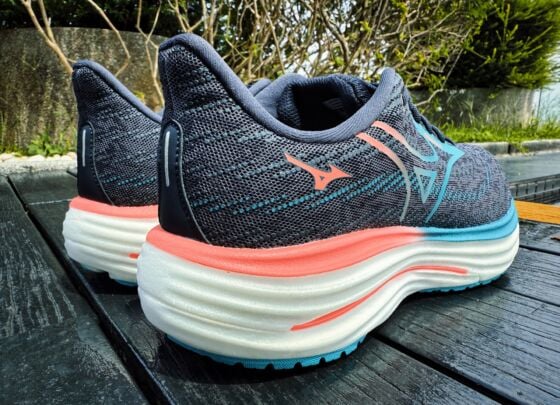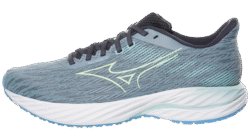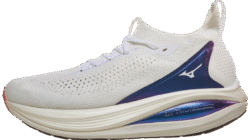Mizuno Wave Rider 29 review
Mizuno Wave Rider 29 Verdict
The pros
- Lighter than the Wave Rider 28
- Lower drop than predecessors
- Durable midsole and outsole
- Soft, modernised ride
The cons
- Not enough cushioning depth for long distances
- $10 price increase
- Not very versatile
Rating breakdown
Facts / Specs
Size/Fit
Cushioning & ride
Usage
Who should buy the Mizuno Wave Rider 29 ?
If you’re looking for a really soft, durable trainer for easy runs, the Wave Rider 29 is a good option.
If you’ve found previous Wave Riders too traditional and boring, the Wave Rider 29 has a much more exciting ride.
Who should not buy the Mizuno Wave Rider 29 ?
If you want a versatile daily trainer that you can use for speed work and easy runs, the Wave Rider 29 has transitions which are too relaxed for fast running.
If you like a firm ride or a ride with very little ground feel, the Wave Rider 29’s midsole will be too soft for you.
Mizuno Wave Rider 29 Introduction

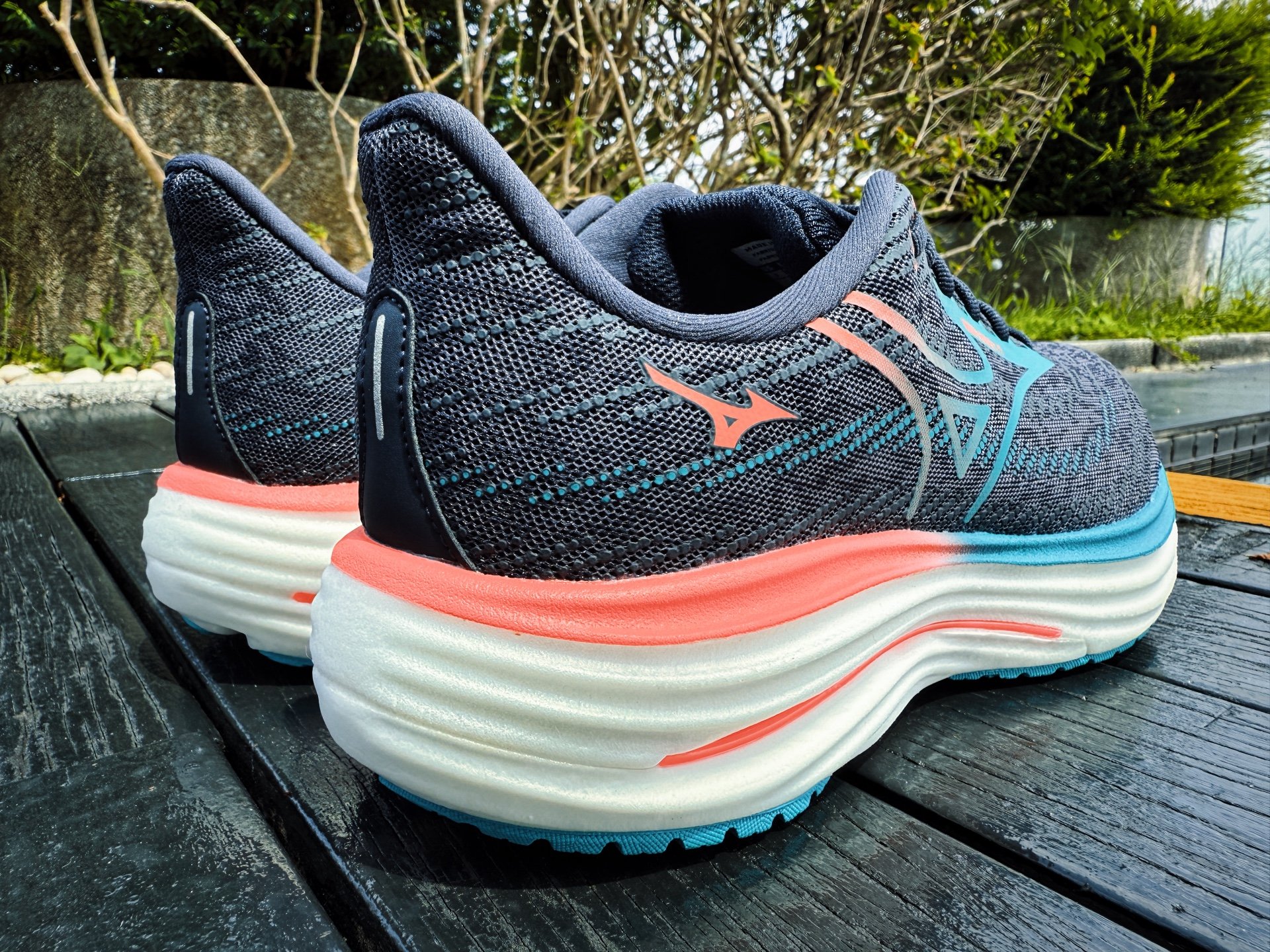
The Wave Rider is one of the Big 6 traditional, mid-range daily trainers along with the Nike Pegasus, Brooks Ghost, Saucony Ride, ASICS Cumulus and New Balance 880. These neutral trainers all have large, loyal fanbases and don’t change much from iteration to iteration.
The Wave Rider is the second oldest franchise, surpassed by only the Pegasus. The Wave Rider has always had 2 distinct characteristics: a high 12 mm drop and a Wave plate in its midsole. This has made a trainer primarily for heel strikers or beginner runners.
Over the years, I’ve run in 2 different versions of the Wave Rider and they have felt very, very similar. I would describe them as having bland, traditional rides without much energy return. They were comfortable daily workhorses for getting your runs done.
The Wave Rider 29 is perhaps the biggest update in the history of the franchise. Its drop has been reduced by 2 mm and it gets a new generation, nitrogen infused Enerzy NXT midsole. It weighs 9.1 oz (258 g) for a men’s US 9 and it has stack heights of 38 mm/28 mm. It’s 0.4 oz (11 g) lighter than its predecessor but it costs $10 more. It’s now $150.
Mizuno Wave Rider 29 First Impressions
My first run was 17.5 kilometres at a very slow, relaxed pace. I was really surprised how soft the ride was. I only weigh 62 kg but the midsole compressed very easily with each foot strike.
It felt like a trainer for only slow running because of how flexible the forefoot was. I didn’t really notice the Wave plate in the rear of the shoe- it wasn’t squeaky or very stiff like previous versions.
The shoe that it reminded me of most was the New Balance Rebel v3. These 2 trainers both have very soft midsole foams with a flexible forefoot. The Wave Rider 29 is much heavier and didn’t feel as fast as the Rebel.
Mizuno Wave Rider 29 Upper

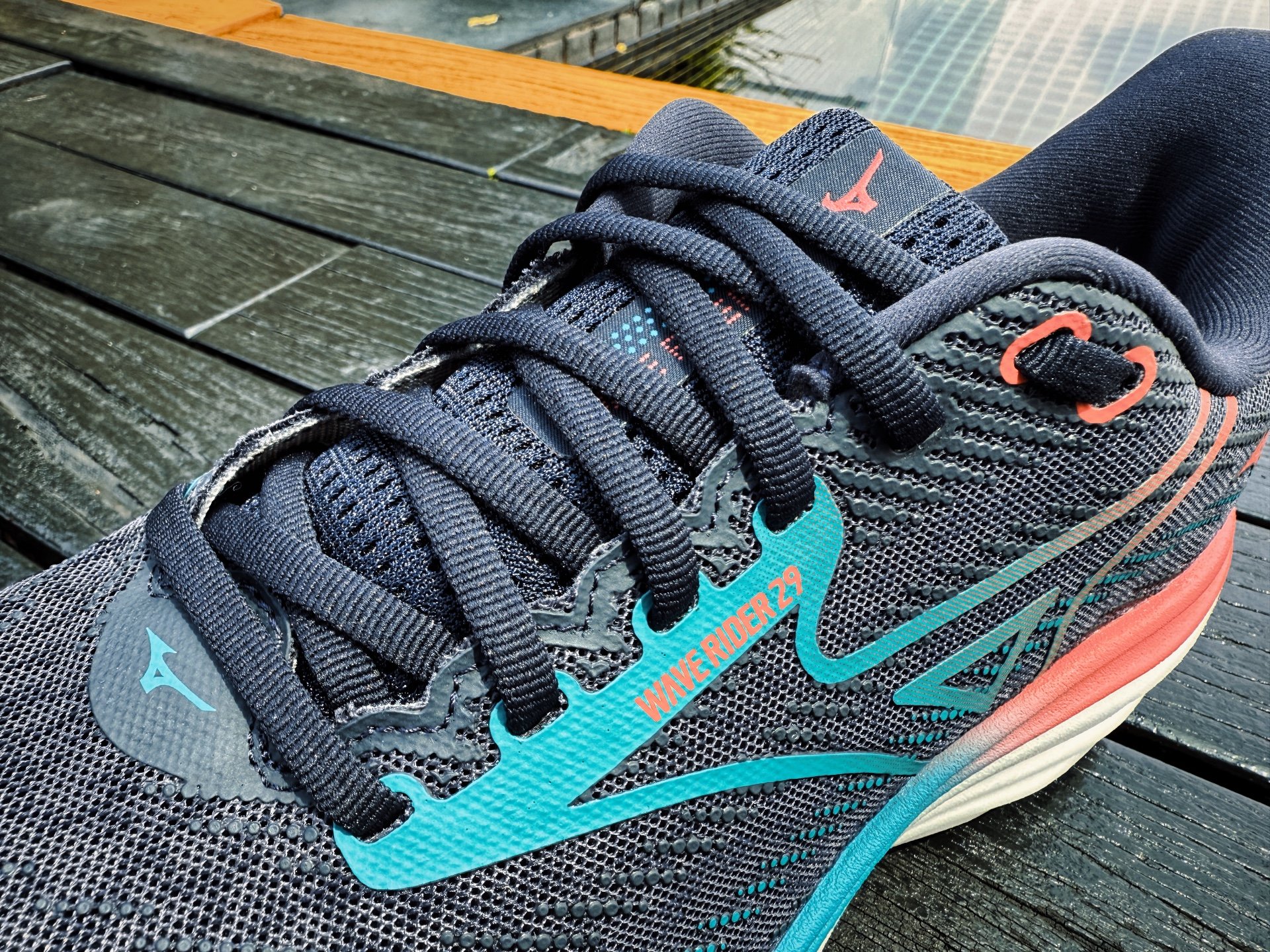
The Wave Rider 29 has a comfortable upper with no major weaknesses. I wish they had put this traditional upper on the Neo Vista 2. It’s made of a Jacquard Air Mesh material which is breathable and conforms to your feet.
The lightly padded tongue is semi-gusseted and it stays in place during runs. There’s an internal heel counter that locks your heel in so there’s no heel slippage.
The fit is true to size and best suited to narrow-medium, low volume feet. It doesn’t have the most spacious toe box but it’s available in a 2E wide version. Unfortunately, there’s no reflectivity on this upper.
Mizuno Wave Rider 29 Sole Unit

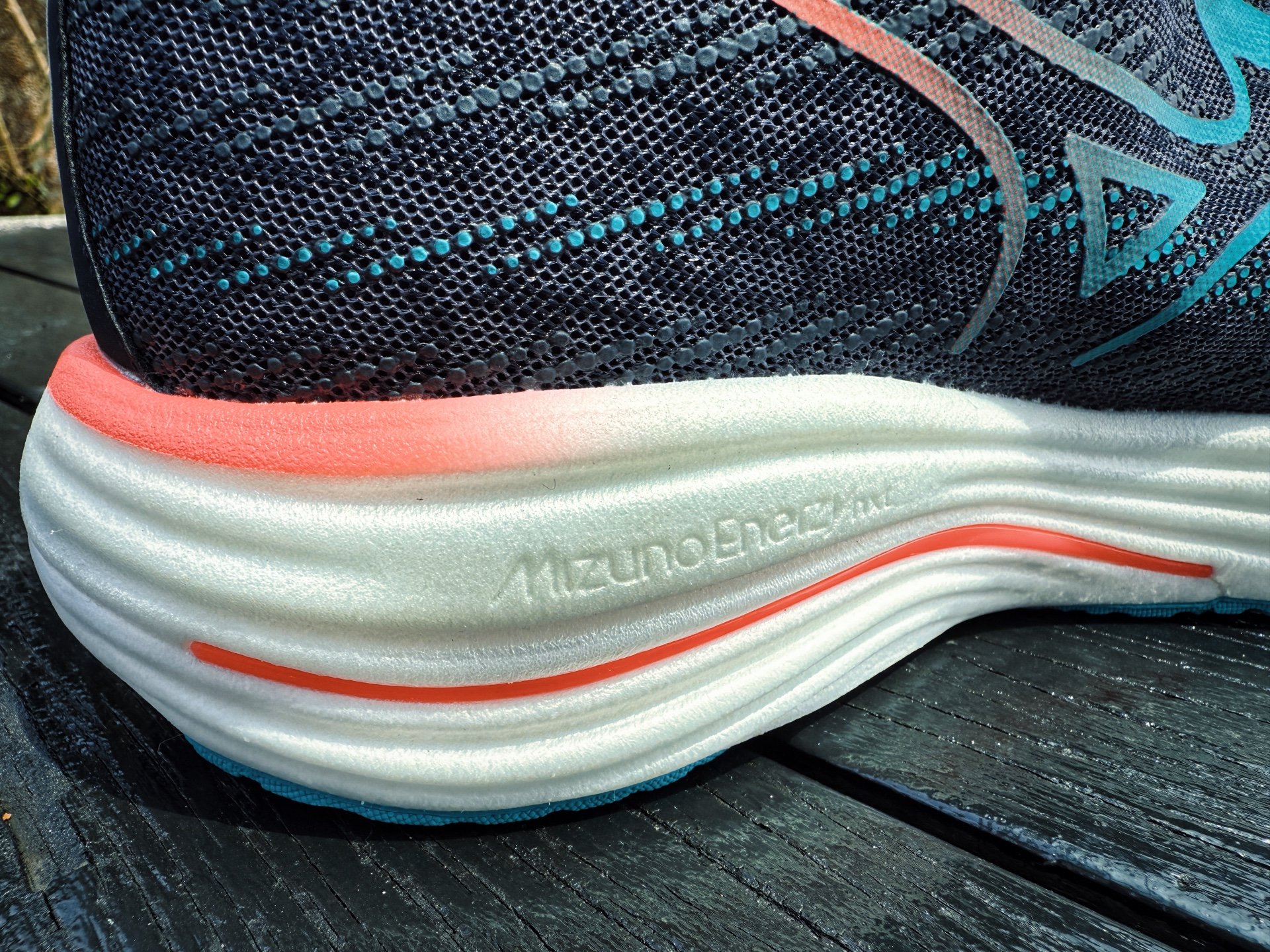
It’s not often that I find a ride too soft but here in the Wave Rider 29, I feel that my feet sink in too much with each foot strike. There’s a lot of ground feel for such a tall midsole that’s 38 mm in the heel and it feels less than 38 because there’s so much midsole compression.
The entire midsole is made of super soft Enerzy NXT foam which was 100% developed by Mizuno in their Osaka research lab. It’s a nitrogen infused EVA foam and while it does have a small amount of bounce and energy return, it’s not as energetic as their nitrogen infused TPU foam which is in the Neo Vista 2.
The new 10 mm drop makes the Wave Rider 29 feel more modern than previous versions. This version is suitable for midfoot and forefoot runners because the cushioning is distributed more evenly. I’m a heel striker and the drop felt even lower than 10 mm because the rearfoot compresses so much when I strike the ground.
The Wave Rider 29 is only suitable for easy runs when you aren’t worried about pace. My runs in it were noticeably slower than in other daily trainers I’ve been testing at the same time. It’s not a heavy shoe but none of my runs in the Wave Rider were under 6 minutes per kilometre (9:40 per m)- this is due to the very flexible forefoot.

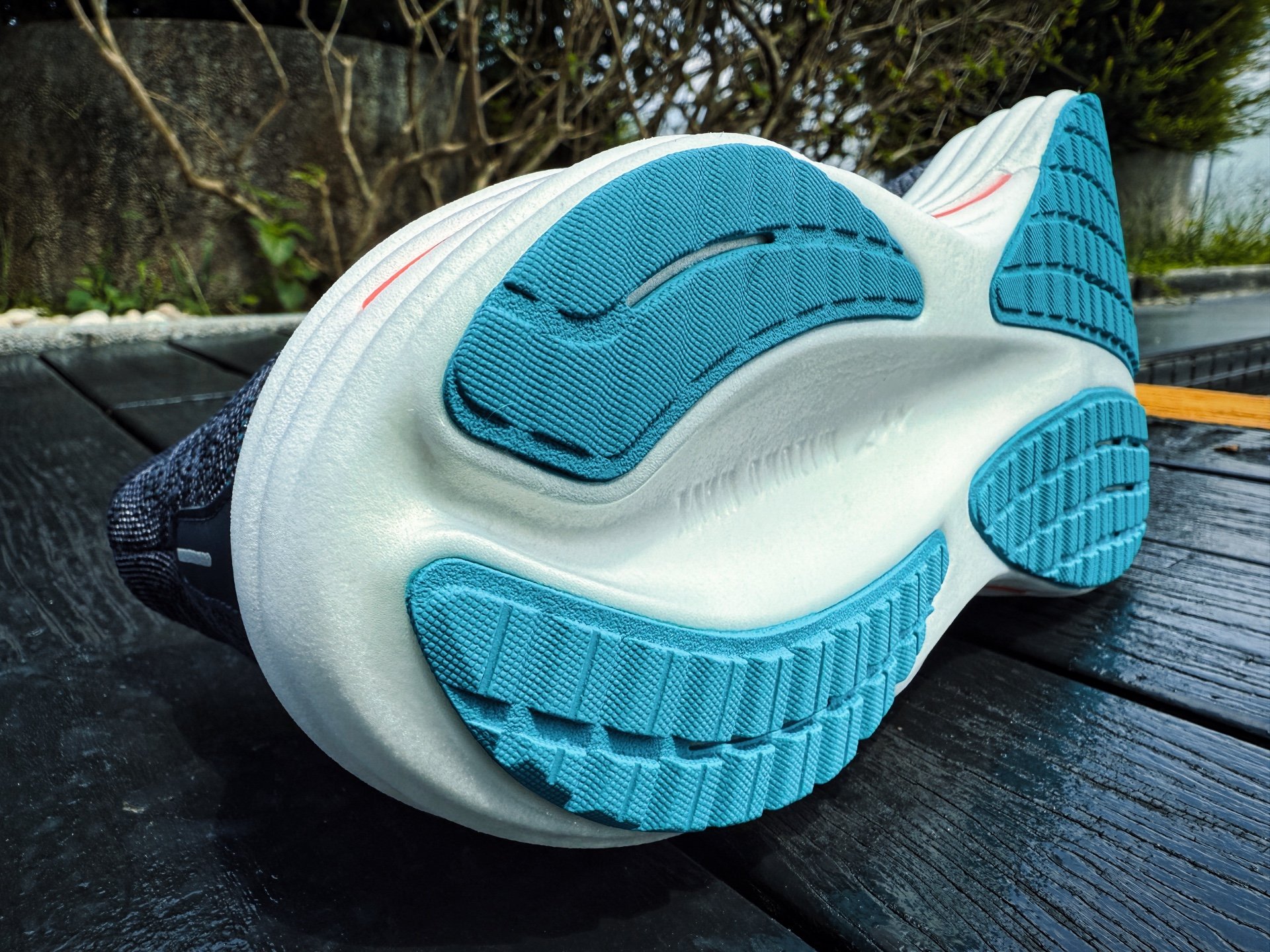
It’s also not a trainer that I would pick for long runs. I prefer trainers with deeper cushioning that have a forefoot rocker for my long runs over 25 kilometres. I feel that the cushioning of the Wave Rider 29 bottoms out because its midsole is so soft.
The signature Wave plate is situated in the rearfoot and midfoot. The plant-based plate is made with a branded TPU called Elastollan which was developed by BASF. It provides structure and support but it isn’t very noticeable. I wish it extended into the forefoot to make it snappier. This would make it easier to pick up the pace and improve versatility.
Durability is the Wave Rider 29’s biggest strength. The midsole foam is highly resistant to scuffs and chips and the outsole is extremely hard-wearing. After 80 kilometres, there’s barely any visible outsole wear on my pair. This is a really tough workhorse that you can use for all your junk mile needs.
Mizuno Wave Rider 29 Conclusions
The Wave Rider 29 is a big step in the right direction for the Wave Rider series. It has a lower drop which is suitable for a wider range of runners, and it has a new age midsole foam which gives it an exciting ride. I enjoyed this version a lot more than the previous Wave Riders I’ve tested.

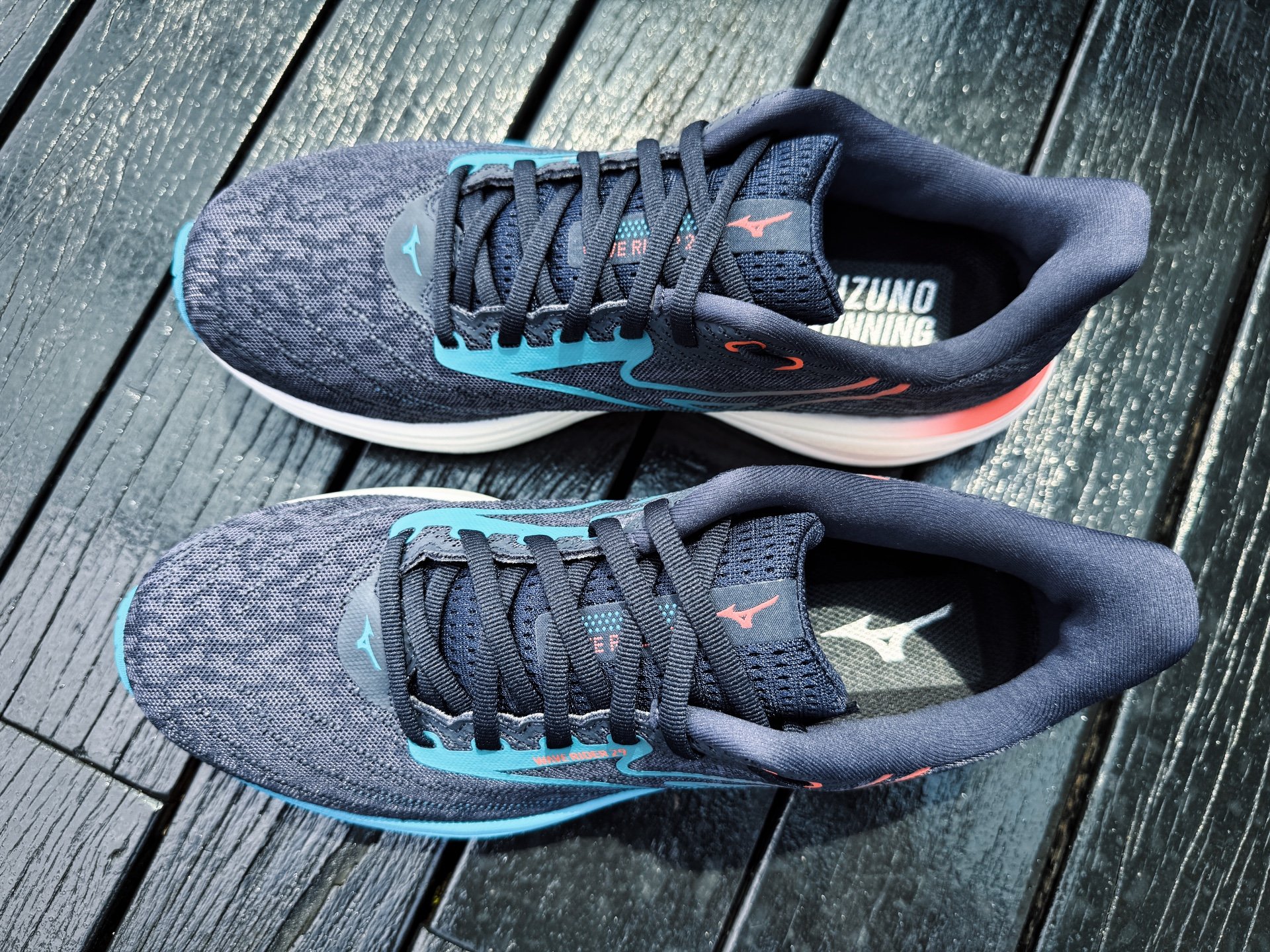
There is still however a lot of room for improvement. In the next version, I hope they make the midsole taller so that there is more cushioning depth and I hope they make the forefoot stiffer to create rockered transitions. This will equip it better for long runs and uptempo runs.
Compared to the other neutral midrange daily trainers of the “traditional” variety, the Wave Rider 29 is by far the softest. The closest to the Wave Rider is the Brooks Ghost 17 which also has a nitrogen infused EVA midsole. The Ghost has a firmer ride and a stiffer forefoot which enables it to handle fast paces better.
The new $150 price tag is the standard price which you’d expect to pay for a midrange daily trainer these days. It’s the same price as the Ghost, Novablast, and Mizuno’s own Neo Zen which is more versatile than the Wave Rider thanks to its higher stack height and supercritical TPU midsole.
How does the Wave Rider 29 compare?
Why you can trust us
As editorial policy, we do not accept free samples from companies.We purchased this pair of Mizuno at Running Warehouse with our own money.
This page contains affiliate links. As an Amazon Associate we earn from qualifying purchases. Read more about our policy.
Reviewed by Brandon
Brandon is a South African marathoner based in Malaysia, where the humidity is high and his shoe rotation is even higher. He’s a runner with a full-blown addiction to running shoes. Most people buy shoes to run—Brandon runs to justify buying more shoes. If there’s a new drop, he’s probably already logged 100km in them.
User feedback (0)
Similar shoes to Mizuno Wave Rider 29












